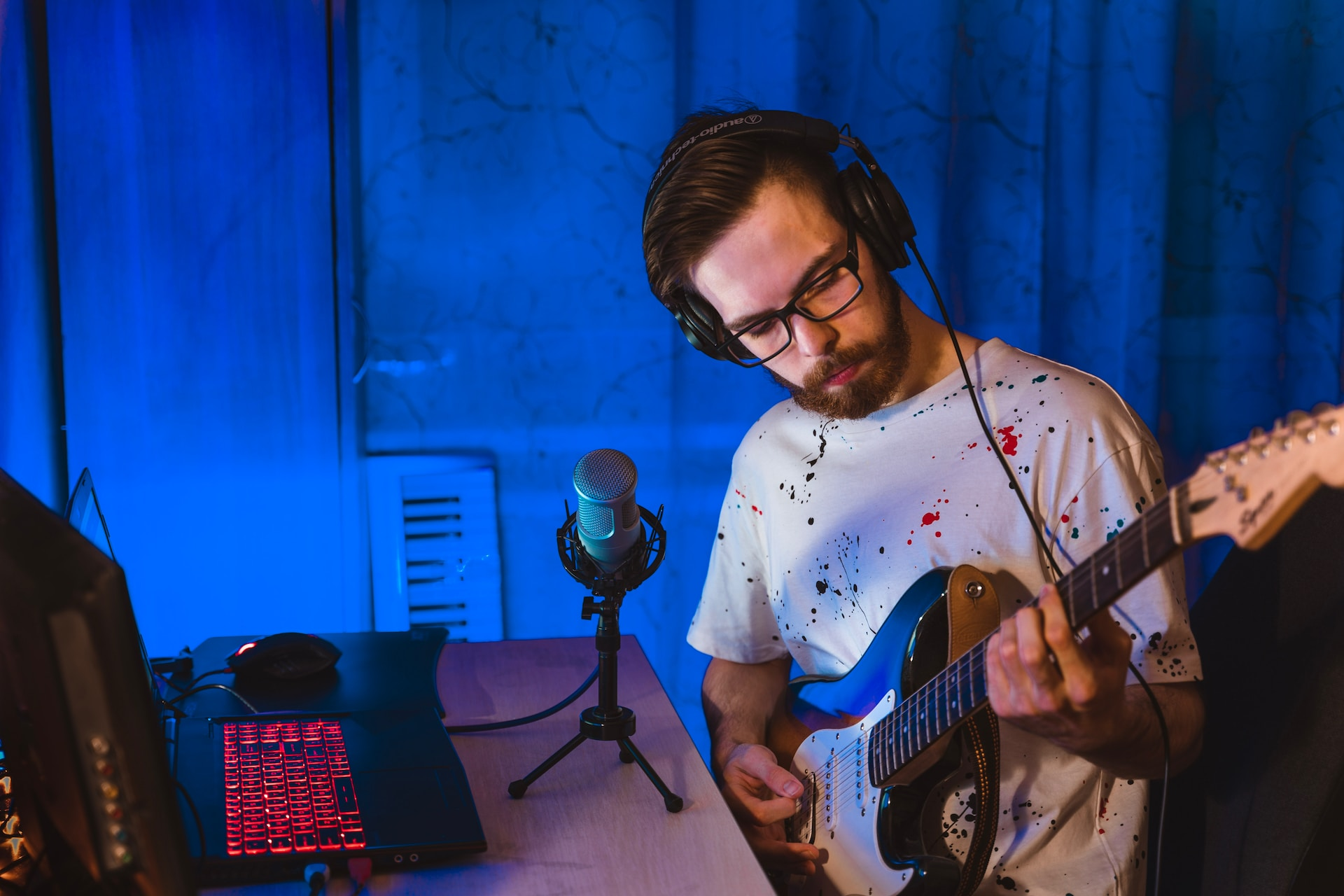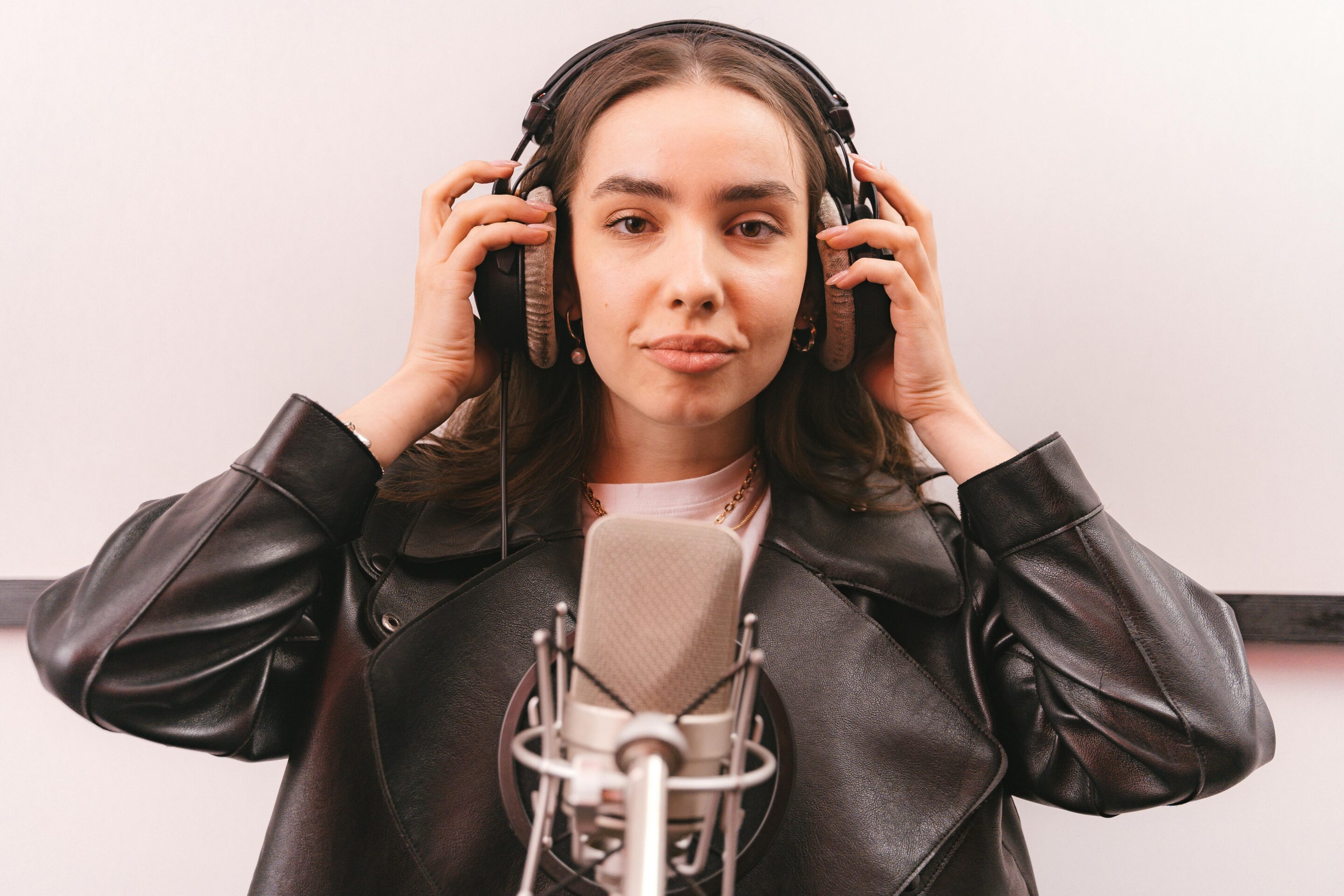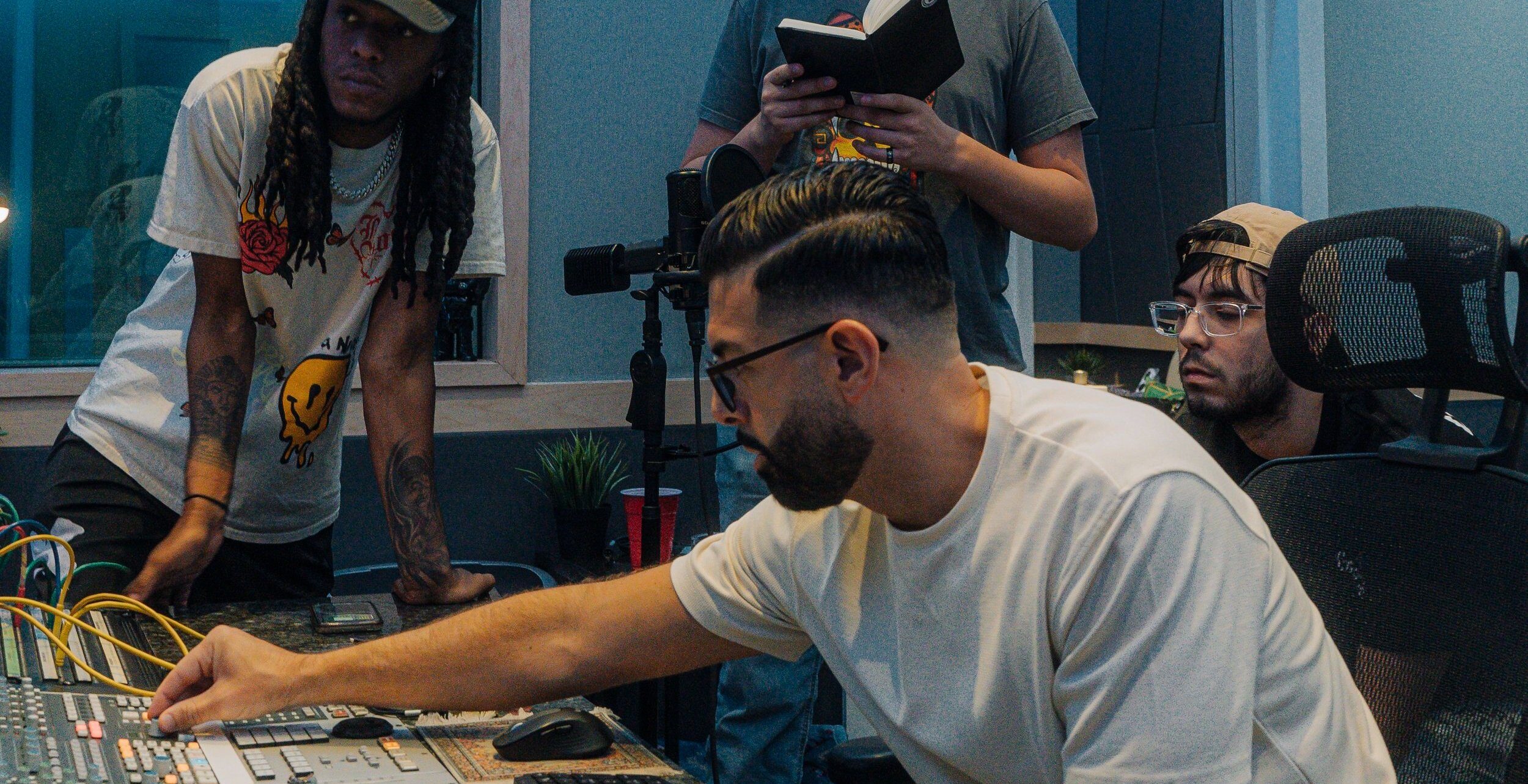Creating a home recording studio has become a popular and achievable goal for many music enthusiasts. With technology like digital audio workstations and affordable audio interfaces, it’s easier than ever to produce music, record songs, and play with virtual instruments in your own space. This trend reflects how music production is becoming more accessible, allowing anyone to set up a basic studio at home and start making their own tracks.
However, a home music producer will encounter many limitations, especially when it comes to mixing and mastering the final product. Let’s explore these limitations, and discover some ways to overcome them in your own recording studio.
Mixing and Mastering: The Biggest Limitation in a Home Recording Studio
Mixing and mastering in a home studio can be hindered by poor acoustics and lack of professional-grade equipment, leading to misjudgments in sound balance and quality. Additionally, the absence of the refined skills and experience found in professional engineers often results in a less polished final product.
It’s important to understand the nuances of mixing and mastering in order to determine if you can achieve a viable product in a home recording studio.
If you’re in need of mixing and mastering services for your own projects, we offer this service online at an affordable price.
Understanding Mixing and Mastering
Before diving into the benefits of professional mixing and mastering, it’s crucial to understand what these processes entail. Mixing is the art of blending all the individual tracks in a recording to create a version of the song that sounds as good as possible. This process involves balancing levels, panning sounds across the stereo field, equalizing tracks to enhance clarity and definition, adding effects like reverb or delay, and more.
Mastering, on the other hand, is the final step in the music production process. It involves polishing the mixed audio, adjusting the final levels, and ensuring consistency across the entire album or EP. Mastering ensures that your track sounds its best on all listening platforms, from headphones to large sound systems.
Challenges of Home Mixing and Mastering
While it’s possible to mix and master music in a home studio, there are several challenges. First, the acoustic environment of most home studios isn’t ideal. Professional studios are designed with acoustics in mind, offering a more accurate space for critical listening.
Secondly, high-end mixing and mastering require not just skills but also a set of specialized tools and software, which can be quite an investment. While digital tools have improved significantly, they may not entirely replicate the nuances of professional-grade equipment.
Furthermore, the skill and experience of the engineer play a critical role. Professionals spend years honing their craft, and without this expertise, a home studio production might lack the polish and balance of a professionally mixed and mastered track.
Why Opt for Professional Studios?
- Expert Ears: Professional engineers and music producers bring years of experience and a finely tuned ear to your project. They can hear subtleties and nuances that you might miss.
- Advanced Equipment: Professional studios are equipped with high-quality gear that can make a significant difference in the sound quality of your final product.
- Objective Perspective: An external engineer brings a fresh perspective to your music, which can be invaluable for achieving the best mix.
- Industry Standards: Professionals ensure your music meets industry standards, which is crucial if you’re aiming for commercial success.
- Time and Efficiency: By outsourcing this phase, you can focus on what you do best — creating music.
How much does an in-home studio cost?
Establishing a home recording studio is a dynamic investment, with costs ranging based on the quality and scope of studio equipment. A low budget often serves as the biggest limitation for a home recording studio.
Initially, a basic home studio setup, ideal for recording vocals or an acoustic guitar, can start from $300-$500. This typically includes essential home recording studio equipment like a dynamic microphone, a basic audio interface, studio headphones, and a pop filter.
For aspiring music producers looking to delve deeper into music production, a mid-range setup costing between $1,000 to $3,000 is suitable. This includes an upgraded digital audio workstation (DAW) like Logic Pro or FL Studio, better quality audio interfaces, studio monitors for more accurate sound, and additional gear like MIDI keyboards and microphones for recording instruments like electric guitar amps or acoustic guitars.
High-end home recording studios, catering to professional musicians and serious music projects, can exceed $5,000. These studios often feature advanced DAWs like Pro Tools, a range of microphones (including condenser microphones for natural sound), studio monitors that rival consumer speakers, various MIDI controllers, and comprehensive acoustic treatment to optimize the recording space for sound isolation and handling bass frequencies.
The journey from owning a decent pair of studio headphones to setting up a complete home studio with studio essentials like bass traps, vocal booths, and sturdy mic stands reflects a significant journey in a music producer’s career.
Regardless of the budget, each home studio setup paves the way for artists to produce music, record vocals, and experiment with editing audio and playing virtual instruments in their own recording space. For more details, check out our home recording studio build guide.
What do you need for a home music studio?
Every home recording studio has different requirements. Be clear about what you need for recording music at home and try to work within your budget.
Studio gear ranges wildly in price and quality. In general, the more you pay, the better your final product will be.
Microphones, cables, and stands
A good selection of microphones, cables, and stands is essential for any home studio. Microphones vary in type and application, with some excelling in vocal recordings and others in capturing instruments. Quality cables, such as XLR cables, ensure signal integrity, and sturdy stands are vital for positioning microphones correctly and safely.
Different setups will require different amounts of recording equipment. If you are recording drums, you will need more microphones and microphone stands than someone who is recording electronic music, software instruments, or a single acoustic guitar.
Studio Monitors to Hear Your Mixes
Studio monitors are critical for accurate audio playback during mixing and mastering. Unlike consumer speakers, they provide a flat frequency response, which allows for an honest representation of your mix, helping you make precise adjustments. You will also need monitor stands to properly hold your studio monitors.
For those on a budget, open back headphones or closed back headphones could be used as studio monitors. However, the quality of your music might suffer without the ability to hear your tracks on real studio monitors.
More on Microphones
A high-quality microphone is a cornerstone of any recording setup. It’s important to choose a mic that suits the specific needs of your project, whether you’re recording vocals, acoustic instruments, or amplifiers, as different mics capture sound in unique ways.
For a well-rounded home studio, it’s beneficial to have a selection of microphones tailored for your main instruments. For example, a large-diaphragm condenser for vocals and acoustic guitar, a dynamic microphone for amplifiers, and a small-diaphragm condenser for cymbals or other high-frequency instruments.
Pop filters are an inexpensive yet invaluable tool for recording vocals. Pop filters eliminate plosive sounds (like ‘p’ and ‘b’) that can cause peaks in your recording, resulting in a cleaner and more professional vocal track.
A Music Production Computer (Laptop or PC)
A computer is your primary tool for recording, editing, and producing music. A powerful music production computer, be it a laptop or a desktop PC, is a must-have in a home studio. It should have enough processing power, memory, and storage to handle audio production software and multiple tracks without lagging, ensuring a smooth and efficient workflow.
Closed-Back Headphones to Monitor Your Playing
Closed-back headphones are essential for monitoring your playing during recording sessions. They offer excellent sound isolation, preventing bleed from the headphones into the microphone, and allow you to hear your mix clearly, even in noisy environments.
Open-back headphones can work for mixing or mastering, but they will bleed sound that could affect your recordings. Don’t use open-back headphones when recording live tracks into a microphone.
Choose an Audio Interface
Selecting the right audio interface is crucial as it serves as the bridge between your instruments/microphones and your computer. Look for one with high-quality preamps, low-latency performance, and enough inputs and outputs to suit your recording needs.
Get a MIDI keyboard
A MIDI keyboard is a versatile tool in music production, useful for playing virtual instruments, composing melodies, and controlling various elements within your digital audio workstation (DAW). It comes in various sizes, offering a range of keys and additional control features like pads and knobs.
MIDI Controller
A MIDI controller, often integrated with the MIDI keyboard, provides additional control over your DAW and software instruments. It can speed up your workflow significantly, with knobs, faders, and pads that can be mapped to control various aspects of your music production software.
Consider Room Treatment
Room treatment is a critical aspect of setting up a home studio, as it significantly impacts the accuracy of your recordings and mixes. Acoustic foam panels, bass traps, and diffusers can be used to minimize unwanted echoes, reverberations, and frequency imbalances, creating a more controlled and sonically neutral environment.
Proper room treatment ensures that what you hear is a true representation of your music, without being colored by the room’s acoustics. Mixing and mastering in a home studio is nearly impossible without a properly-treated room.
Choosing a Digital Audio Workstation
The heart of any home recording studio is the Digital Audio Workstation (DAW), a powerful tool that brings all elements of music production together. From recording and editing to mixing and mastering, choosing the right DAW is crucial for your music creation journey. Let’s explore the options, ranging from free software for beginners to industry-standard DAWs for professional music producers, and consider how to budget for this essential piece of your home studio setup.
Free DAWs
Free DAWs, like Audacity, Reaper, or Cakewalk, offer a cost-effective way to start in music production. They provide basic recording and editing tools, suitable for beginners or those on a tight budget. However, they may lack advanced features found in professional-grade software.
Using a free DAW might limit the quality of your music, especially when you reach the mixing and mastering stage.
Industry Standard DAWs
Industry-standard DAWs such as Pro Tools, Logic Pro, Presonus Studio, and Ableton Live are widely used by professionals. They offer extensive features, high-quality plugins, sample libraries, and robust support. These DAWs are ideal for serious music production but come with a higher price.
Budgeting for a DAW
When budgeting for a DAW, consider both the initial cost and potential future expansions like plugins or additional samples. Free DAWs can be a good starting point, but investing in a professional DAW can be beneficial for long-term growth in music production. Factor in the cost relative to your needs and the complexity of projects you intend to undertake.
Conclusion
Home studios are a fun way to record music in a quick and easy way, without having to shell out thousands of dollars for professional recording studios. However, the limitations of audio recording at home can quickly become apparent. While you might be successful at getting those initial tracks laid down, putting together the final product will be difficult without the acoustic treatment, studio monitors, and other equipment found at a professional recording studio.
Since mixing and mastering is the most difficult part of home recording, some recording studios offer remote mixing and mastering services to help home engineers overcome these limitations. Check out our mixing and mastering services for indie artists if you want to put a professional touch on your music.
Related Questions
How do I optimize my computer performance for home recording?
Optimizing your computer for home recording involves a few key steps:
- Upgrade RAM and Storage: More RAM improves overall performance, while an SSD ensures faster data access and processing.
- Manage Background Processes: Close unnecessary applications and services to free up resources.
- Optimize Your DAW: Adjust buffer size and sample rate settings in your digital audio workstation for efficient performance.
- Update Drivers and Software: Keep your operating system, DAW, and audio drivers updated.
- Use Dedicated Hardware: Consider a dedicated audio interface for better sound quality and reduced latency.
- Regular Maintenance: Regularly clean your computer physically and digitally, removing dust and organizing files.
By following these steps, you can significantly improve your computer’s performance for home recording tasks.
What is the best microphone for my home recording studio?
The best microphone for your home recording studio depends on your needs and budget:
- Budget Level: Dynamic microphones like the Shure SM58 is a great starting point. It’s versatile, durable, and affordable, ideal for basic vocal and instrument recording.
- Mid-Range: For more versatility and better sound quality, consider a condenser microphone like the Audio-Technica AT2020. It’s well-suited for detailed vocal recording and acoustic instruments.
- High-End: For professional-quality recording, microphones like the Neumann TLM 102 offer superior sound clarity and precision, ideal for advanced music production and recording various instruments.
Each level offers different benefits in terms of sound quality, sensitivity, and versatility.



















